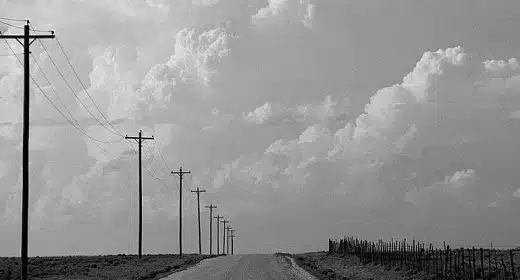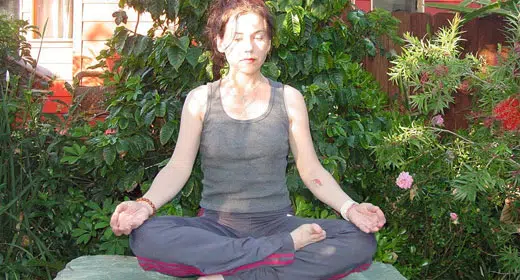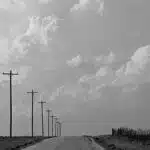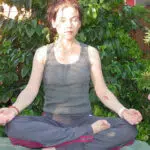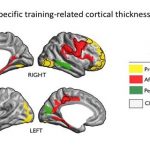HAWAII: Sri Krishna Pattabhi Jois, proponent of Ashtanga Vinyasa Yoga, died on Monday at his house in Gokulam after a brief illness at the age of 94.  Popularly known as Guruji by his students across the globe, Pattabhi Jois was honoured by the Karnataka government with the Patanjali Gold Medal in 1986. He was most recently teaching in Hawaii, on Kauai in 2000, and there are several certified Ashtanga teachers in Hawaii that teach this style specifically.
Popularly known as Guruji by his students across the globe, Pattabhi Jois was honoured by the Karnataka government with the Patanjali Gold Medal in 1986. He was most recently teaching in Hawaii, on Kauai in 2000, and there are several certified Ashtanga teachers in Hawaii that teach this style specifically.
Most vinyasa yoga taught today, has roots to the dedication and efforts of Sri Krishna Pattabhi Jois to continue teaching yoga as he learned from his teacher Krishnamacharya. Pattabhi Jois was born on July 26, 1915, in the village of Kowshika near Hassan. He held a teaching position in Yoga at the Maharaja’s Sanskrit College for many years. He established the Ashtanga Institute in 1948 and started to travel abroad from 1975 to conduct yoga classes.
Pattabhi Jois urged his students to pay more attention to this inner receptivity of ‘being” in matters of diet, health, nutrition. “Find out what works for you,” he says. “Yoga is not physical, very wrong. Hatha Yoga can indeed be used as external exercises only, but that is not the ultimate benefit of Yoga. Yoga can go very deep, deep and touch the soul of man. When Yoga is performed in the right way, over a long period of time, the nervous system is purified, and so is the mind. When you take asana properly, for a long time, pratyahara, dharana and dhyana naturally becomes more established and then greater clarity of mind and increased receptivity of self is brought about.” [From an interview in Namarupa Magazine entitled “3 Gurus,” Autumn 2004]
A Brahmin by birthright and training, and a student of Advaita tradition first propagated by Sri Shankaracharya, “authenticity and proper commitment to learning the tradition properly is of paramount importance to Pattabhi Jois.’ “Everything is there,” he says, “We just need to recover the understanding within our own minds. Then we can truly understand the greatness of our forefathers.” referring to the time spent as a student of Krishnamacharya in Mysore, BKS Iyengar was also a younger student of Krishnamacharya. Together the two students have brought the physical practice of Yoga to the spotlight of global interest in the subject of Yoga. Although the actual impact of the practice and the effect it has on its various practitioners is an individual journey, this particular practice has helped people relate to yoga in a new, different way. According to Pattabhi Jois it was never really about the physical body, but rather the inner experiencer of it all which is gradually set free and becomes more manifest in the process.
Krishnamacharya’s pupils were indian boys, and to work with the youthful energy, he included yoga, gymnastics, and Indian wrestling to create dynamically-performed asana sequences aimed at building physical fitness. This vinyasa (flow) style uses the movements of Surya Namaskar (Sun Salutation) to lead the students into each asana and then out again and is combined with pranayama (breathing) and drishti, (gaze points) for meditative concentration. Eventually, Krishnamacharya standardized the pose sequences into three series consisting of primary, intermediate, and advanced asanas. Students were grouped in order of experience and ability, memorizing and mastering each sequence before advancing to the next.
According to this system, there are six different sequences of postures a person may learn, also known as “series.” They have an average of 25 asanas each.The first series called Yoga Cikitsa (Yoga for Health) in Sanskrit, aims to realign and balance the physical body by first facilitating an awakening to greater health and then increase the flow of energy throughout the body by opening up stagnation in the ankles, knees, hips and spine for improved circulation and well being. The primary series and was made famous by Richard Freeman, an early student of Pattabhi Jois. The “Power Yoga” and other styles of “Fitness Yoga” that became popular in the gyms and health clubs around the world 10 to 20 years ago all bear reference to the Primary Series, the first sequence taught by the AYRI.
Though Krishnamacharya developed this manner of performing yoga during the 1930s, it remained unknown in the West for the next 40 years. The popularity of Ashtanga yoga, is the work of one of Krishnamacharya’s most faithful and famous students, K. Pattabhi Jois. Pattabhi Jois met Krishnamacharya in the hard times before the Mysore years. As a robust boy of 12, Jois attended one of Krishnamacharya’s lectures. Intrigued by the asana demonstration, Jois asked Krishnamacharya to teach him yoga. Jois’s father was an astrologer, priest, and landholder. From the age of 5 Pattabhi Jois was instructed in Sanskrit and rituals by his father, as were all Brahmin boys. He was the first in his family to be interested in or study yoga.
Jois returned to Mysore when he was 21 years old married Savitramma on the full moon of June 1937. In 1948 with the help of Sri K. Pattabhi Jois’ students, they purchased a home in the section of town called Lakshmipuram, where they lived with their children Saraswathi, Mañju and Ramesh and later also his grandson (b. 1971) .The entire family lives and teaches at the Ashtanga Yoga Research Institute center estabished In 1948.
Unlike other teachers, Pattabhi jois was not a prolific writer. He wrote Yoga Mālā (“Yoga Garland”) – published in India in 1962 and later published in English in 1999.
In 1964, a Belgian”André Van Lysebeth (1919-2004) spent two months with Jois learning the primary and intermediate asanas of the J’apprends le Yoga (Yoga Self-Taught) which mentioned Jois and included his address. This marked the beginning of westerners coming to Mysore to study yoga. Jois’ yoga shala has since attracted thousands of foreign yoga students every year. They came to practice in his presence, and to have the opportunity to learn from a master.


